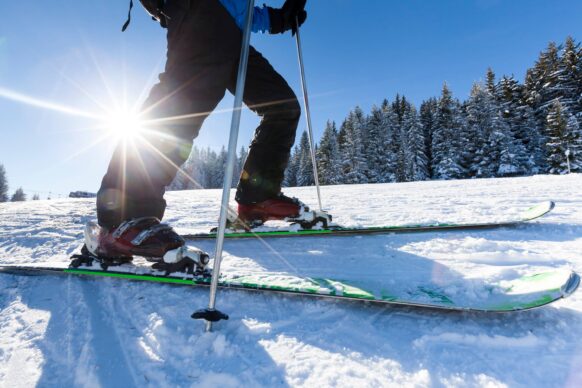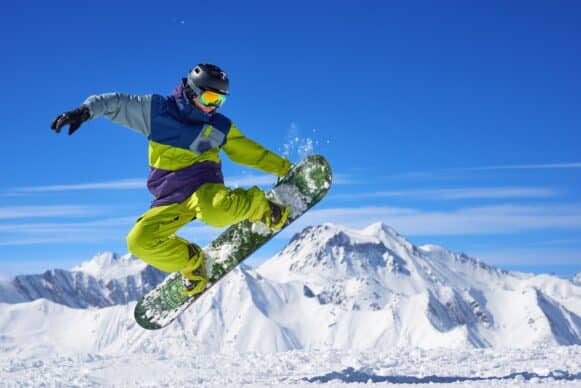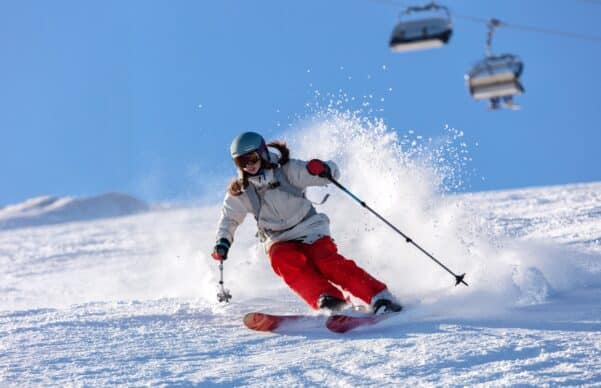by Miles Nicholas, PT, DPT, CSCS, FDN-C
There is no avoidance of wholeheartedly toast legs after your first few trips to the ski slopes! But there are things you can do in the weeks/months leading up to ski season that will lessen the degree to which this fatigue affects your performance throughout the day and reduces the risk of fatigue-related injury.
I’d recommend starting with general strengthening activities such as squats, deadlifts, lunges, and calf training in addition to jumping tasks (plyometrics). Our “ACL Risk Reduction” blog provides a rough overview of these activities.
If the above components are already being addressed 2x/week, then I’d recommend the addition of anaerobic conditioning 1-2x/week. This can be performed following the general strengthening activities or on a separate training day. While resistance training is inherently anaerobic (low oxygen utilization), conditioning the legs in this fashion will be more specific to the loads of skiing itself… lactate burn guaranteed.
An assault/echo bike is my preferred means of anaerobic training due to the minimal technical skill required, but sprinting and rowing are two other options. Here, we’ll use time for our prescription of duration, but distance (i.e. 1/4 mile) or calories (i.e. 10 cal) can be used as well.
Sample 4 Week Progression:
Week 1:
30” at 4/10 effort (moderate) vs. 30” at 1/10 effort (very very easy) (10-15 rounds)
Week 2:
20” at 6/10 effort (hard) vs. 40” at 1/10 effort (10-15 rounds)
Week 3:
12” at 8/10 effort (very hard) vs. 48” at 1/10 effort (10-15 rounds)
Week 4:
7” at 10/10 effort (maximal) vs. 53” at 1/10 effort (10-15 rounds)
Following completion of this program, you could alternate between weeks 2, 3, and 4 with additional rounds completed, or begin using longer durations of training. Given that an intense ski run typically lasts between 30” and 3’ (minutes), I see the potential benefits of training in this window.
An example workout progression with this longer training duration could be:
Week 1
60” at 5-6/10 effort (moderate-hard) vs. 2’ at 1/10 effort (1-2 rounds)
Week 2
90” at 5-6/10 effort (mod-hard) vs. 3-4’ at 1/10 effort (1-2 rounds)
Week 3
90” at 5-6/10 effort (mod-hard) vs. 3-4’ at 1/10 effort (2-3 rounds)
Week 4
2’ at 5-6/10 effort (mod-hard) vs. 4-6’ at 1/10 effort (2-3 rounds)
For these longer training intervals, you’ll notice that the recovery duration is quite long. This is due to the fact that we’re purposely training at an intensity (mod-hard) above the aerobic range, where lactate will accumulate in the working muscles. Sufficient time is necessary for lactate to be cleared prior to the next interval. We advise pedaling on the bike or walking around between reps, rather than sitting or laying down, to assist with recovery between sets.
If you’re looking to participate in an exercise program with the purpose of preparing for ski/snowboard season, look no further than our Wintervention program! We integrate general strengthening, plyometrics, and aerobic/anaerobic conditioning into a challenging and fun workout that will increase the likelihood of a healthy and high-performance season on the slopes.




